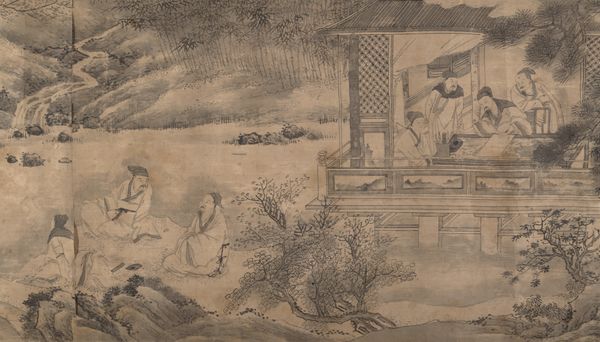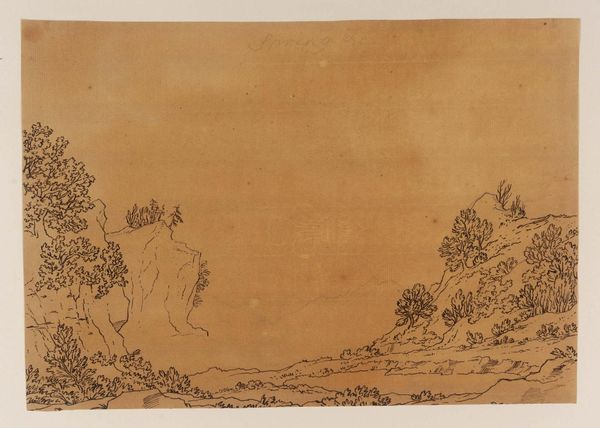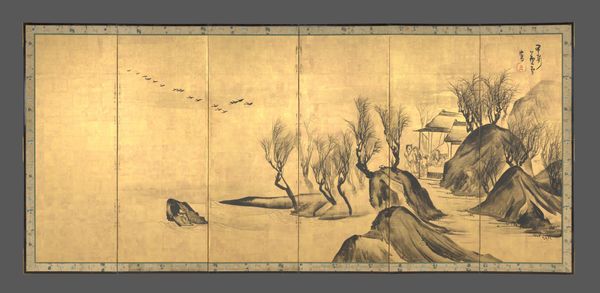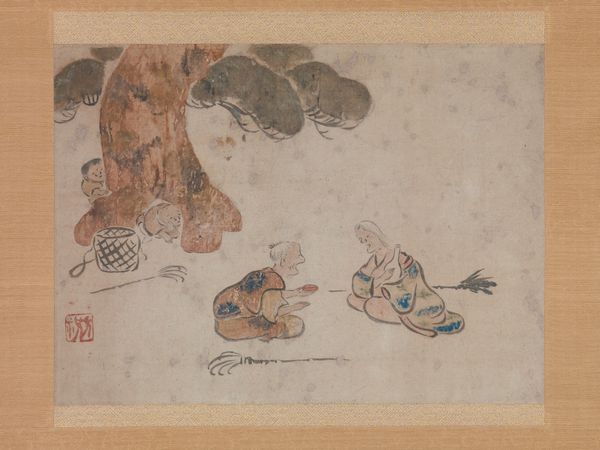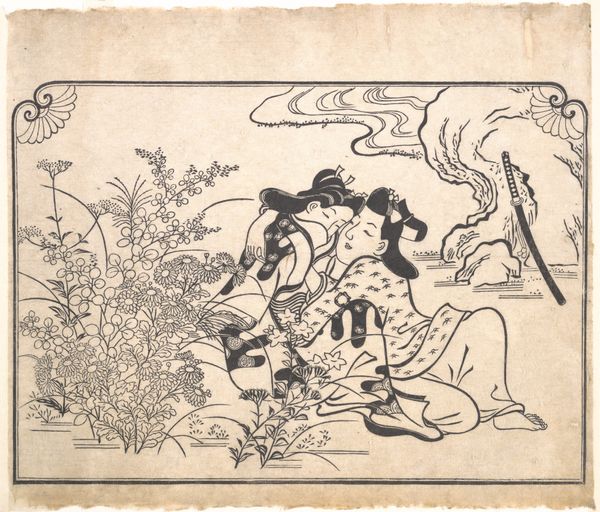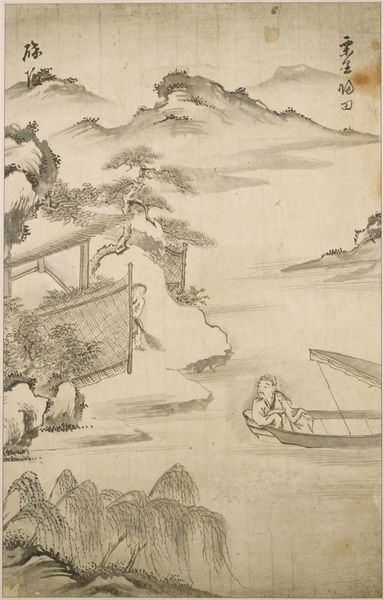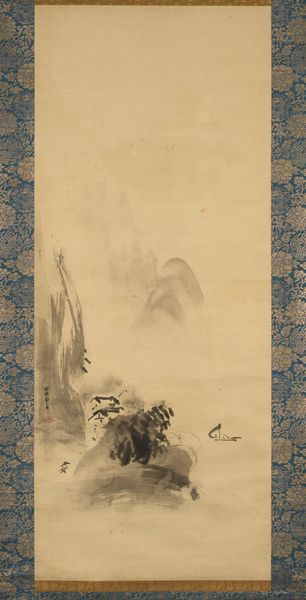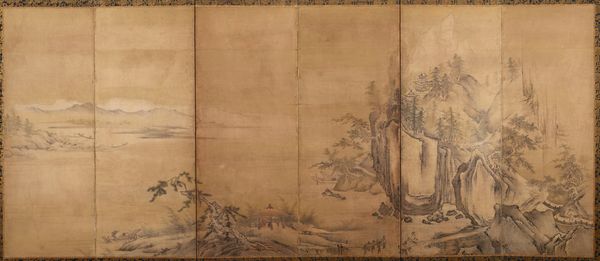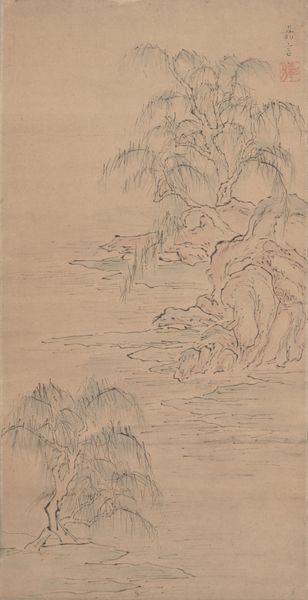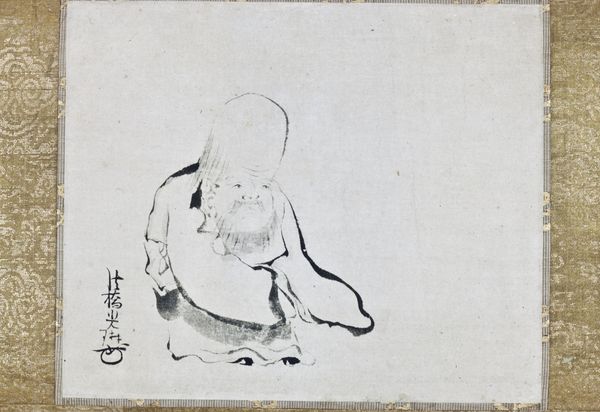
drawing, paper, ink
#
portrait
#
drawing
#
water colours
#
asian-art
#
landscape
#
figuration
#
paper
#
ink
#
coloured pencil
#
coffee painting
#
23_muromachi-period-1392-1573
#
men
#
monochrome
Dimensions: 12 x 18 3/4 in. (30.5 x 47.6 cm)
Copyright: Public Domain
Editor: This is "Zen Encounter (Niaoke Daolin and Bai Juyi)" made with ink and watercolors on paper, dating somewhere between 1467 and 1533 by Kenkō Shōkei. It gives me a sense of quiet contemplation despite the men in the image seeming almost confrontational with each other. How do you interpret this work, especially regarding its composition? Curator: Observe how the artist manipulates positive and negative space. The figures are positioned asymmetrically, creating a visual tension. Daolin is solid, dominating the left with heavier lines and sitting below the implied weight of a large, leaning tree. While Bai Juyi on the right is rendered with more delicate lines, creating a sense of airiness. Note the lines of their gazes, creating vectors across the void that divides and, ultimately, connects them. How does that speak to you? Editor: The asymmetry is so clear now! So the harsh lines and solid shapes are visually louder even if he's further back. What about Shōkei’s decision to keep it largely monochrome, but use light watercolors? Curator: Precisely. By using varied ink tones and minimal color, Shōkei prioritizes the textural and tonal contrasts. Consider, the stark black of their robes against the paper and background suggests spiritual depth versus worldliness, echoed in the very different treatments of their figures.. The lines themselves—their quality, their density—create not just forms but also emotional weight. Editor: I see it! The linear quality helps portray both conflict and also a shared plane with its spatial ambiguities. Thank you! I really get so much from just taking time with formal qualities. Curator: And understanding those forms is a way to begin decoding artistic meaning and expression. Remember, it is the language through which the artist communicates, regardless of the content they are conveying!
Comments
No comments
Be the first to comment and join the conversation on the ultimate creative platform.
